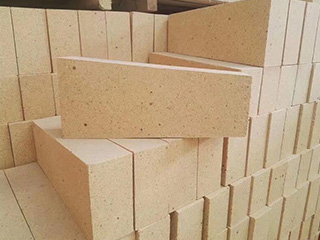Concrete is a widely used construction material due to its high strength, durability, and affordability. However, it is susceptible to cracking and failure due to factors such as temperature changes, shrinkage, and external forces. To address this issue, fibers are commonly added to concrete to enhance its strength and durability. In this article, we will provide a comprehensive guide to the role of fiber in reinforcing concrete.
What are Concrete Fibers?
Concrete fibers are small, thin, and often microscopic fibers that are added to concrete to enhance its properties. These fibers are typically made of materials such as steel, glass, synthetic polymers, natural fibers, and carbon fibers. Concrete fibers are available in various shapes, sizes, and compositions, and are typically added to the concrete mix during the mixing process.
Types of Concrete Fibers
There are several types of concrete fibers, each with its own unique properties and advantages. The most common types of concrete fibers are:
1.Steel Fibers: Steel fibers are the most commonly used type of fiber in concrete. They are typically made of high-strength steel and provide excellent reinforcement against cracking and failure due to external forces.
2.Glass Fibers: Glass fibers are made of thin, spun glass strands and are used to enhance the durability and fire resistance of concrete. They are also used to improve the resistance of concrete against impact and abrasion.
3.Synthetic Polymer Fibers: Synthetic polymer fibers are made of materials such as polypropylene, nylon, and polyester. They are typically added to concrete to improve its resistance to cracking and shrinkage.
4.Natural Fibers: Natural fibers such as hemp, coconut, and jute are also used to reinforce concrete. They are typically added to concrete to improve its workability and reduce its carbon footprint.
5.Carbon Fibers: Carbon fibers are made of thin, long strands of carbon and are used to enhance the strength and durability of concrete. They are also used to improve the thermal and electrical conductivity of concrete.

Advantages of Fiber-Reinforced Concrete
Fiber-reinforced concrete has several advantages over traditional concrete. These include:
1.Increased Strength: The addition of fibers to concrete increases its strength and resistance to cracking and failure due to external forces.
2.Improved Durability: Fiber-reinforced concrete is more durable and resistant to abrasion, impact, and weathering than traditional concrete.
3.Reduced Shrinkage: The addition of fibers to concrete can reduce its shrinkage, which helps to prevent cracking and deformation.
4.Improved Workability: The addition of fibers to concrete can improve its workability and reduce the amount of water needed to mix the concrete.
5.Reduced Carbon Footprint: The use of natural fibers in concrete can help to reduce its carbon footprint and make it more sustainable.
Applications of Fiber-Reinforced Concrete
Fiber-reinforced concrete has a wide range of applications in the construction industry. Some of the most common applications include:
1.Flooring: Fiber-reinforced concrete is often used in flooring applications where high strength, durability, and resistance to wear and tear are required.
2.Bridge Decks: Fiber-reinforced concrete is used in the construction of bridge decks to improve their durability and resistance to damage from traffic and weather.
3.Tunnels: Fiber-reinforced concrete is used in the construction of tunnels to improve their strength and durability.
4.Precast Concrete: Fiber-reinforced concrete is commonly used in the production of precast concrete products such as pipes, walls, and panels.
5.Marine Structures: Fiber-reinforced concrete is used in the construction of marine structures such as docks, piers, and seawalls to improve their durability and resistance to corrosion.
Conclusion
Fiber-reinforced concrete is an important construction material that enhances the strength and durability of concrete. The addition of fibers to concrete can improve its resistance to cracking, shrinkage, abrasion, and impact, making it more suitable for a wide range of applications. The use of different types of fibers such as steel, glass, synthetic polymers, natural fibers, and carbon fibers, each with its unique properties, allows for the customization of concrete to meet specific project requirements. The versatility of fiber-reinforced concrete makes it an excellent choice for a variety of applications in the construction industry, including flooring, bridge decks, tunnels, precast concrete, and marine structures.
When selecting fiber-reinforced concrete for a particular application, it is essential to consider the specific requirements of the project, such as the strength, durability, and resistance to external forces needed. The type of fibers used, their composition, shape, and size, will all have an impact on the final properties of the concrete. Therefore, it is important to consult with experts in the field to ensure the correct selection and application of fiber-reinforced concrete.
In summary, fiber-reinforced concrete is a critical material in the construction industry that enhances the strength and durability of concrete. Its versatility and ability to improve the resistance of concrete to cracking, shrinkage, abrasion, and impact make it an excellent choice for a wide range of applications. As technology continues to advance, we can expect to see further innovation and improvements in the use of fiber-reinforced concrete in construction, leading to the development of more durable and sustainable construction materials.
Contact: Mgr. Han
Phone: 0086-13589497465
Email: 1255953279@qq.com
Add: Industrial Area of Lingzi Town,Zichuan District,Zibo City, Shandong,China